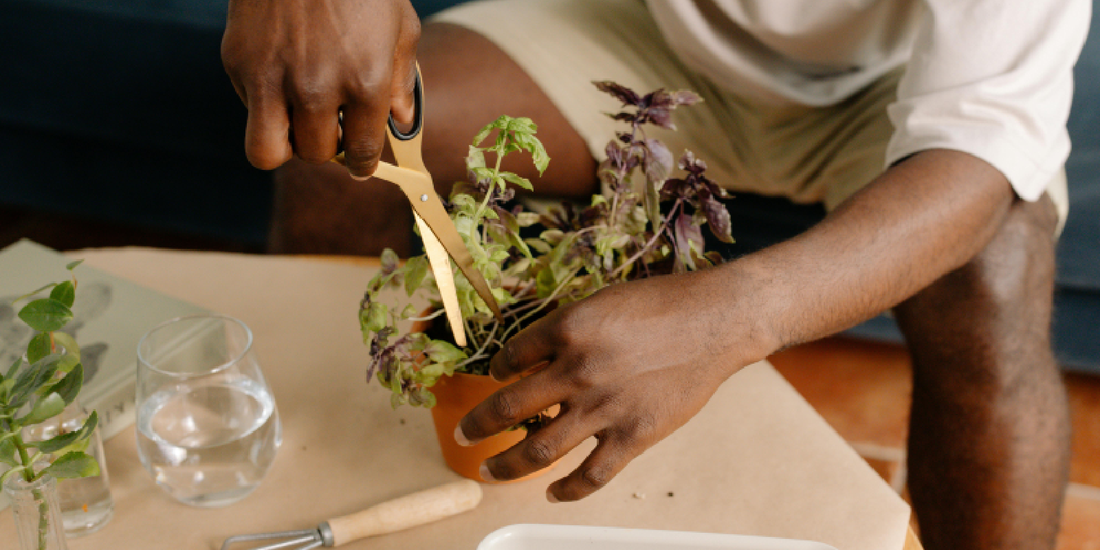
Best Light Cycles for Leafy Greens Indoors
Share
Indoor gardening has become one of the most rewarding ways to bring fresh, nutritious food right into your home. For leafy greens such as lettuce, spinach, kale, arugula, and Swiss chard, success often comes down to one crucial factor: light cycles. Whether you are growing with a high-tech hydroponic system or a stylish plant stand with integrated grow lights like the amoyls VerdantGlow S-Shaped 8-Tier Plant Shelf with Grow Lights, knowing the best light schedule can make the difference between weak, leggy plants and lush, vibrant harvests.
In this guide, we will explore how light cycles affect leafy greens, the best schedules to use, and practical tips for setting up your indoor garden.
Why Light Cycles Matter for Leafy Greens
Plants rely on photosynthesis to grow. Light provides the energy they need to produce carbohydrates, strengthen their cell structure, and develop healthy leaves. Leafy greens are particularly sensitive to light exposure because they are harvested for their foliage rather than fruit or flowers.
- Too little light → Stunted growth, pale leaves, and low yields.
- Too much light → Stress, leaf burn, or unnecessary energy use.
- Balanced light cycles → Dense, tender leaves, faster growth, and multiple harvests.
For most leafy greens, striking the right balance between light intensity, duration, and timing is essential.
Understanding Photoperiods
The photoperiod is the length of time plants receive light each day. Different categories of plants respond differently:
- Short-day plants – Flower when days are shorter than nights (e.g., strawberries).
- Long-day plants – Flower when days are longer than nights (e.g., spinach, lettuce bolting stage).
- Day-neutral plants – Growth is less affected by day length (e.g., cucumbers, tomatoes).
Leafy greens generally fall under long-day plants, which means they grow vigorously with extended light exposure but may bolt (go to seed) if exposed to excessive light at later stages.
The Best Light Cycles for Leafy Greens Indoors
1. Seedling Stage: 16–18 Hours of Light
When germinating and establishing roots, seedlings need consistent light to fuel rapid cell division. At this stage:
- 16–18 hours of light per day
- 6–8 hours of darkness for respiration and root development
Darkness is just as important as light—plants “rest” and redistribute energy at night.
2. Vegetative Growth: 12–16 Hours of Light
Once seedlings mature into strong young plants, leafy greens thrive with slightly reduced light.
- 12–16 hours of daily light is ideal.
- This encourages leafy expansion without overstressing the plant.
- Balanced cycles mimic late spring or early summer conditions.
3. Maintenance and Harvest: 10–12 Hours of Light
As greens near harvest size, slightly shorter cycles help maintain tenderness and prevent bolting.
- 10–12 hours of light daily keeps leaves crisp and fresh.
- Prevents premature flowering in crops like spinach and arugula.
Continuous Lighting: Is 24 Hours Too Much?
Some growers experiment with leaving lights on 24/7. While plants can survive under constant light, it often leads to:
- Faster initial growth but weaker structure
- Increased nutrient demands
- Stress symptoms like curled leaves or discoloration
Verdict: For leafy greens, avoid continuous lighting. Controlled cycles produce healthier, tastier crops.
Choosing the Right Light Spectrum
Not all light is created equal. Natural sunlight provides a full spectrum, but indoor grow lights must be chosen wisely:
- Blue light (400–500 nm): Stimulates vegetative growth and leaf development.
- Red light (600–700 nm): Encourages flowering and stem elongation (less crucial for leafy greens).
- Full-spectrum LEDs: Best for balanced growth, replicating natural sunlight.
The amoyls VerdantGlow Plant Shelf uses integrated grow lights designed for indoor greenery, delivering the right mix of wavelengths for consistent results.
Practical Setup for Indoor Leafy Greens
- Positioning: Place greens 6–12 inches below grow lights to avoid leggy growth.
- Rotation: Rotate trays weekly to ensure even exposure.
- Timers: Use programmable timers for consistent light cycles.
- Layered Growing: With the 8-tier VerdantGlow stand, you can stagger plant ages—seedlings on top tiers with longer light cycles, mature greens on middle tiers with moderate cycles.
This makes the most of vertical space and ensures continuous harvests.
Energy Efficiency and Sustainability
Indoor gardeners often worry about electricity use. Modern LED grow lights are highly efficient, consuming less power than traditional fluorescent or HID lamps. Using scheduled cycles of 12–16 hours reduces unnecessary energy use while keeping plants thriving.
The VerdantGlow stand’s LED lights are designed for efficiency, making it easy to run multiple tiers without a significant energy footprint.
Troubleshooting Common Light Issues
- Yellowing leaves: Often due to insufficient light or overwatering.
- Leggy stems: Lights are too far away—adjust height.
- Leaf burn: Excessive intensity or exposure. Shorten duration or raise lights.
- Bolting (early flowering): Reduce daily light exposure to around 10–12 hours.
Combining Light with Other Growth Factors
While light cycles are crucial, remember that leafy greens also depend on:
- Temperature: Ideal range 60–70°F (15–21°C).
- Humidity: 50–70% for most greens.
- Watering: Keep soil moist but not soggy.
- Nutrients: Balanced nitrogen for lush foliage.
When these factors work together, leafy greens flourish indoors year-round.
VerdantGlow in Action: A Stylish Indoor Garden
The amoyls VerdantGlow S-Shaped 8-Tier Plant Shelf with Grow Lights combines function and style:
- Modern design fits seamlessly into living rooms, kitchens, or offices
- Integrated grow lights eliminate guesswork
- Perfect for urban apartments and small spaces
By aligning your light schedule with your plants’ natural rhythms, you can enjoy continuous harvests of fresh, nutrient-rich greens directly at home.
Conclusion
Leafy greens are some of the easiest and most rewarding crops to grow indoors, but their success depends largely on managing light cycles. By following the 16–18 hours for seedlings, 12–16 hours for vegetative growth, and 10–12 hours for mature plants, you can ensure your greens stay healthy, tender, and abundant.
Paired with the right setup—like the amoyls VerdantGlow Plant Shelf with Grow Lights—you can create a productive, stylish, and sustainable indoor garden that delivers harvests all year long.
